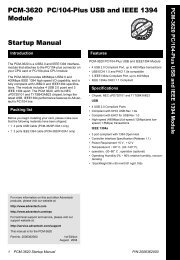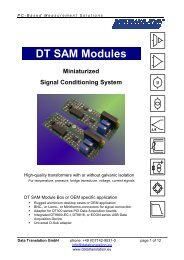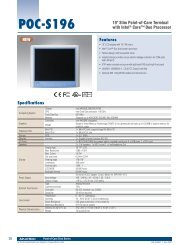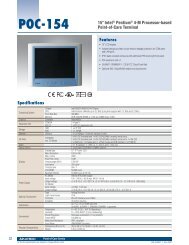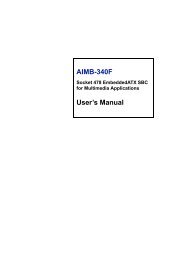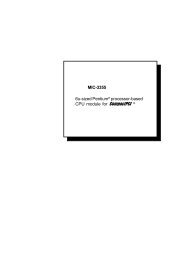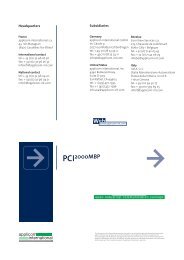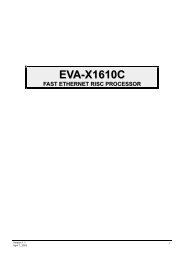1747-6.22, Backup Scanner User Manual
1747-6.22, Backup Scanner User Manual
1747-6.22, Backup Scanner User Manual
Create successful ePaper yourself
Turn your PDF publications into a flip-book with our unique Google optimized e-Paper software.
Rules for Configuring<br />
the <strong>Scanner</strong><br />
General<br />
<strong>Scanner</strong> Configuration and Programming 5-63<br />
• The smallest portion of the scanner’s I/O image that can be<br />
allocated to a single RIO device is two logical groups (1/4<br />
logical rack).<br />
• If a device is configured in word 1, there must be image<br />
allocated to it in word 2. This rule also applies to words 3 and 4<br />
with the following exception: if word 3 = 1 and word 4 = 0, the<br />
complementary mode is selected even though no complementary<br />
devices are configured.<br />
• A logical device’s starting group must begin at even group<br />
numbers (0, 2, 4, or 6). Each bit in words 2 and 4 represent an<br />
even logical group number.<br />
Concerning Complementary I/O<br />
• It is valid for you to have a complementary device configured<br />
even if no associated primary device exists. Also,<br />
complementary devices do not have to be the same logical image<br />
size as the primary device.<br />
• G file words 1 and 2 can both be zero (no primary devices).<br />
However, in this case there must be at least one complementary<br />
device configured in G file words 3 and 4.<br />
• If there is at least one primary device configured in G file words<br />
1 and 2, then words 3 and 4 can both be zero, or the G file size<br />
can be set to 3 (complementary mode not selected).<br />
• The starting group of the primary and complementary chassis<br />
should be the same if they share the same image space. If the<br />
starting group is not the same, the image of the complementary<br />
device must not “cross over” into the space of a primary device.<br />
For example, if a primary device exists at Logical Rack 1,<br />
Logical Group 4, the maximum size of a complementary device<br />
at Logical Rack 9, Logical Group 0 is a half logical rack. The<br />
image does not cross over into Logical Group 4.<br />
• A complementary device cannot be configured at locations<br />
where primary devices are configured unless they both start at<br />
the same location.<br />
• If you configure your system so that complementary I/O is not<br />
selected (words 3 and 4 are zero), you must not set up any of the<br />
actual devices to be in the primary mode. If you do, the system<br />
flags the device as faulted and prevents the device from running.<br />
• Control functions (i.e., device inhibit, device reset, and device<br />
output reset) are only selectable for the primary device, but also<br />
apply to the complementary device. Control functions for<br />
complementary devices cannot be exclusively enabled.<br />
Publication <strong>1747</strong>-<strong>6.22</strong>




